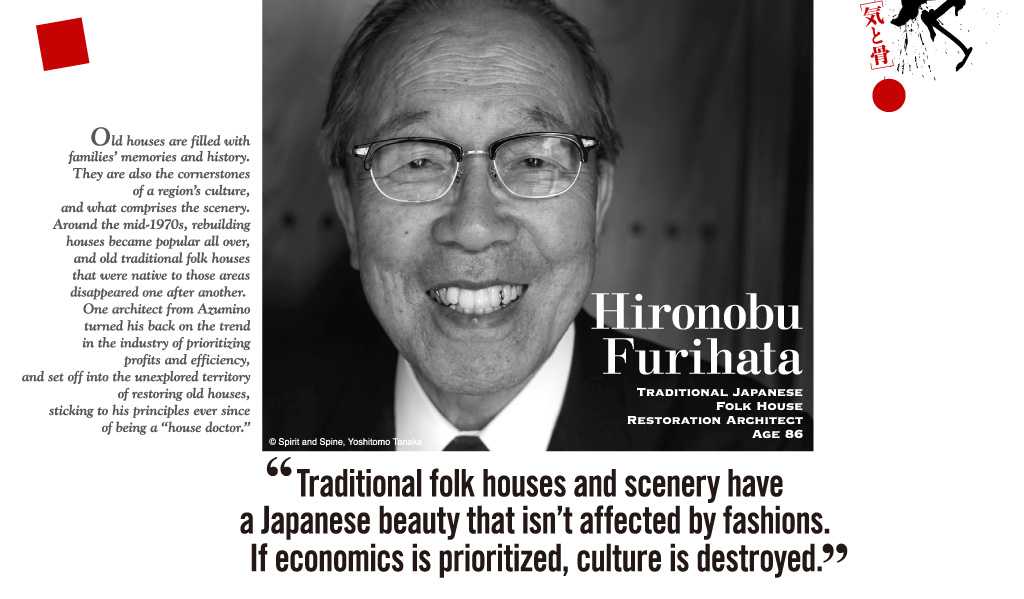Inside the waiting room of a doctor’s office in Sekikawamura, Niigata Prefecture, thick beams, full of character, cross between support beams that stand straight up. The white walls of the atrium configured with the dark colors of the timber, create a space that is reminiscent of somewhere from a previous time, with modern touches added to it. There is floor heating, but also a tatami space has been installed for the elderly and infants. In the examining room, soft light shines in through the shoji. It’s a unique room that helps patients to relax and gives them a sense of security. The exterior of the house harmonizes gently with the rows of historic houses that make up the scenery of the area. This building that serves as both a doctor’s office and a home was beautifully restored, utilizing the framework from the original old building. The hub of this traditional folk home restoration activity is Shinshu, but it hasn’t just stopped there. Throughout the country this restoration activity has been used to renovate 300 houses and 84 other establishments.
In a family that runs a construction company established by their grandfather, he is the only son, who was born in between his elder and younger sisters. He went to Tokyo to study architecture and had strong rebellious feelings about succeeding his father in the family business. After graduation, he was full of confidence that he could prosper as an architect in Tokyo, but due to overwork he became seriously ill, both mentally and physically. Prepared to die, he returned home, but what healed him was his family’s devoted nursing and Azumino’s natural scenery. He succeeded his father in the business, but also founded an architectural office too. He started traditional folk home restoration, 35 years ago, when he came across the remains of a Genroku era village headman Kusama’s residence in Matsumoto. The residence was close to dilapidated, but through trial and error he brought it back to life, and in doing so he opened up a new field of restoration. The results of his work in each area stand as beacons that convey the region’s culture.







































































































